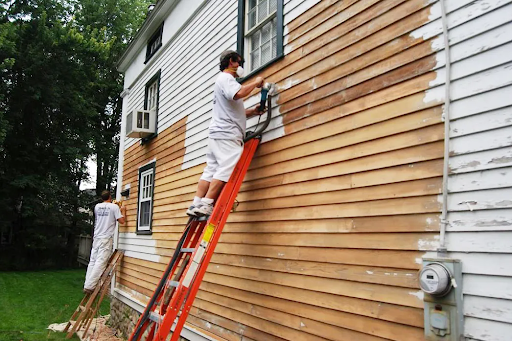Enhancing the exterior of a property can dramatically boost its curb appeal, offering a fresh and inviting look that can transform the entire appearance of a home or commercial building. Exterior painting plays a pivotal role in this transformation, serving not only to refresh the aesthetics but also to protect the structure from the elements. This guide provides essential tips for effective exterior painting, ensuring a durable and visually appealing result.
Understanding the Impact of Exterior Painting
Exterior painting is more than just a cosmetic update; it is a critical aspect of property maintenance. A well-executed paint job can increase property value, enhance the overall look, and provide a protective layer against weather-related damage. Investing in high-quality exterior painting can safeguard against moisture infiltration, UV damage, and other environmental factors that can deteriorate a building’s exterior.
Choosing the Right Exterior Paint
Selecting the appropriate paint for your exterior project is crucial for achieving a long-lasting finish. Exterior paints are specially formulated to withstand varying weather conditions and to adhere effectively to surfaces such as wood, stucco, brick, or vinyl. Here are some key considerations:
- Type of Paint: Acrylic latex paints are widely recommended for their durability and flexibility, which help in resisting cracking and peeling. They are also easy to clean and maintain.
- Finish: The finish of the paint affects both the appearance and performance. Matte finishes can hide imperfections but are less durable, while gloss and semi-gloss finishes offer better durability and are easier to clean.
- Color Selection: Choose colors that complement the architectural style of the property and the surrounding environment. Lighter colors often reflect heat and are suitable for hot climates, whereas darker shades can absorb heat and may be preferable in cooler regions.
Preparing the Surface
Preparation is key to a successful exterior painting project. Proper surface preparation ensures better paint adhesion and a smoother finish. Follow these steps for effective surface preparation:
- Cleaning: Thoroughly clean the surface to remove dirt, mildew, and loose paint. Use a pressure washer or a mixture of water and mild detergent to achieve a clean surface.
- Repairing: Inspect the exterior for any damage such as cracks, holes, or peeling paint. Repair these issues using appropriate fillers and caulking compounds. Sand the repaired areas to ensure a smooth surface.
- Priming: Apply a high-quality primer to the surface, especially if you are painting over bare wood or a drastically different color. Priming helps in sealing the surface and enhances paint adhesion.
Applying the Paint
Proper application techniques are essential for achieving a professional-looking finish. Follow these guidelines to ensure an even and durable application:
- Weather Conditions: Choose a time to paint when the weather is favorable. Avoid painting in extreme temperatures or high humidity, as these conditions can affect paint drying and curing.
- Tools and Techniques: Use high-quality brushes, rollers, or sprayers depending on the surface and paint type. For large, flat areas, rollers or sprayers are efficient, while brushes are ideal for detailed work and edges.
- Application Method: Apply the paint in thin, even coats rather than one thick coat. Multiple thin layers provide better coverage and a more uniform finish. Allow adequate drying time between coats as per the paint manufacturer’s instructions.
Maintenance and Care
Once the exterior painting is complete, proper maintenance will help in prolonging the life of the paint job. Regular maintenance includes:
- Cleaning: Periodically clean the painted surfaces to remove dust, grime, and mildew. Use a soft brush or cloth and a mild detergent solution.
- Inspection: Regularly inspect the exterior for signs of wear, peeling, or damage. Promptly address any issues to prevent further deterioration.
- Touch-Ups: Keep some of the paint for touch-ups. Address minor scuffs and chips as they occur to maintain the appearance and protection of the paint.
Conclusion
Transforming curb appeal through exterior painting involves careful planning, selection of quality materials, and meticulous execution. By following these essential tips for exterior painting, you can achieve a striking transformation that not only enhances the visual appeal of your property but also ensures its protection and longevity. Whether you are preparing your home for sale or simply updating its look, investing in a professional exterior painting job will yield significant benefits and lasting value.









